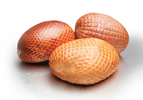 Many processors view the selection of netting and final packaging as two separate steps. Historically, food netting has been (and continues to be) chosen for performance and efficiency, while final packaging is selected for shelf appeal. But with today’s consumers making more food choices with their eyes as well as their taste buds, something as visible as the pattern on a meat surface cannot be ignored. Whether accurate or not, netting patterns communicate valuable information to the consumer about the how the protein was made, the company that made it and even how it tastes. Processors who neglect to consider the impact of a netting pattern as they select final packaging are missing an opportunity to tell their story and set themselves apart on crowded deli shelves.
Many processors view the selection of netting and final packaging as two separate steps. Historically, food netting has been (and continues to be) chosen for performance and efficiency, while final packaging is selected for shelf appeal. But with today’s consumers making more food choices with their eyes as well as their taste buds, something as visible as the pattern on a meat surface cannot be ignored. Whether accurate or not, netting patterns communicate valuable information to the consumer about the how the protein was made, the company that made it and even how it tastes. Processors who neglect to consider the impact of a netting pattern as they select final packaging are missing an opportunity to tell their story and set themselves apart on crowded deli shelves.
Why are there patterns on meat in the first place?
Back when consumers purchased meat from neighborhood butcher shops, butchers would hand tie roasts with string. In the 1950s when netting for meat was first introduced to replace the time-consuming hand-tie process, the basic rectangular pattern created by these ties was one of the first patterns available. Netting made it faster and easier to process meats, while the pattern reminded consumers of the traditional and familiar experience they received at their local butcher shop.
Netting used in a smoking process, like whole hams and turkeys, had a different evolution. This type of netting was developed to provide a convenient way to transport protein through the smokehouse. These stockinet nets were not intended to imprint any pattern onto the meat. However, processors discovered an interesting fact about stockinet nets: if the mesh of the netting was opened up with a pattern, airflow was improved and the products would cook faster than traditional netting.
What is the consumer impact?
Today, most consumers are not concerned with the functionality or the history of the netting on their meats. They view the netting pattern as part of the final packaging – part of what makes the product attractive to buyers before they taste it. Just as the processor carefully designs the artwork and labeling for the retail package, they need to make sure the netting pattern underneath is reinforcing the same message.
For example, traditional large squared netting leaving deep impressions on meats that are hand-tied with thick butcher twine communicates “old-world” manufacturing. If a company’s brand features country and traditional products, a similar netting pattern would be a great way to reinforce this idea even after the packaging has been removed.
For a processor that prides itself on innovative products and cutting edge approaches, this “old world” netting pattern may not be delivering the correct message about their products or their company. To communicate a more innovative brand message, diamond or hexagonal netting may be a more progressive and appropriate option.
These days, there are many options when it comes to netting. When selecting netting, processors must think beyond its performance and consider the message it sends about their brand and product. If it isn’t telling the right story, then it may be time to rethink the net.



